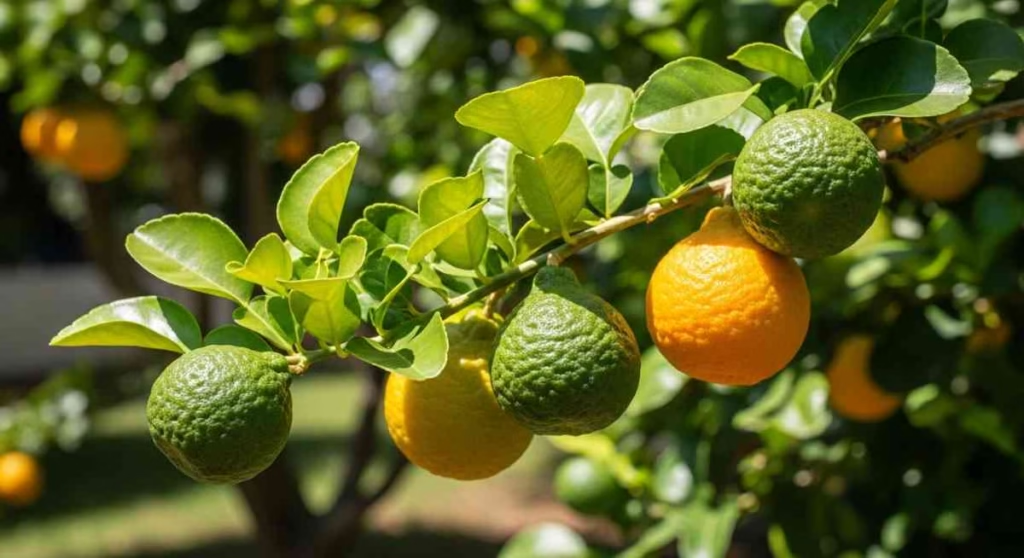Introduction: The Beauty and Mystery of the Bergamot Plant
The bergamot plant is one of nature’s most fascinating creations — a fragrant, citrus-like plant that has inspired perfumes, teas, and herbal remedies for centuries. Known for its distinct aroma and healing qualities, bergamot is cherished by gardeners, chefs, and aromatherapists around the world.
From its sweet floral scent to its medicinal essential oil, the bergamot plant blends beauty, flavor, and wellness in a single bloom. But what exactly is this plant, and why is it so popular in natural health and skincare circles today? Let’s dive deep into its origins, benefits, and uses.
What Is the Bergamot Plant?
The term bergamot can refer to two different plants, depending on the context:
- Citrus bergamia – a small citrus tree that produces the bergamot orange, mainly grown in Italy’s Calabria region.
- Monarda didyma – a flowering herb in the mint family, also called bee balm or Oswego tea, native to North America.
Both share the name bergamot because of their similar fragrance — fresh, sweet, and slightly spicy. However, their uses vary. The citrus variety is prized for its essential oil, while the herbaceous kind is popular in herbal teas and gardens.
The Origins and History of Bergamot
The bergamot orange tree has a long history rooted in Mediterranean culture. It’s believed to be a hybrid between bitter orange and lemon, cultivated for centuries in southern Italy.
By the 17th century, bergamot essential oil became a key ingredient in perfumes and cosmetics. Its unique scent also made it the signature flavoring of Earl Grey tea — a beloved drink worldwide.
Indigenous communities traditionally used the Monarda species for medicinal teas and wound care, valuing its natural antiseptic and digestive benefits.
Today, both varieties of the bergamot plant are celebrated for their therapeutic and aromatic properties.
Distinguishing Features of the Bergamot Plant
The Citrus bergamia tree is small and evergreen, with glossy green leaves and round, yellow-green fruits resembling miniature oranges. Its flowers are white and fragrant, blooming in spring.
The Monarda variety, in contrast, is a hardy perennial herb with vibrant red, pink, or purple blossoms that attract bees and butterflies. It grows best in sunny, moist conditions and releases a refreshing scent when its leaves are crushed.
Both plants thrive in warm climates, though the citrus type prefers Mediterranean weather, while the herb adapts well to temperate zones.
Health Benefits of the Bergamot Plant
The bergamot plant isn’t just admired for its beauty — it’s also known for its powerful health-promoting properties. Let’s look at what makes it so valuable in modern wellness.
1. Reduces Stress and Anxiety
Bergamot essential oil is widely used in aromatherapy for relaxation. Its soothing fragrance helps calm the mind, reduce anxiety, and promote better sleep. Diffusing a few drops of bergamot oil in your room can instantly lift your mood.
2. Supports Heart Health
Some studies suggest that bergamot extract may help lower cholesterol levels, supporting cardiovascular health. Compounds in the fruit, such as flavonoids, help balance “good” and “bad” cholesterol naturally.
3. Improves Digestion
Both citrus and herbal bergamot varieties are known for their digestive benefits. Drinking bergamot tea after meals can relieve bloating, gas, and mild stomach discomfort.
4. Natural Antiseptic and Anti-inflammatory
Bergamot essential oil has antibacterial and anti-inflammatory properties. When diluted and applied to the skin, it can help soothe minor cuts, acne, and irritation.
5. Enhances Skin Health
Used in skincare, bergamot oil brightens the complexion and helps reduce excess oil. It’s a common ingredient in natural toners, soaps, and perfumes due to its refreshing citrus aroma.
6. Boosts Energy and Mental Clarity
The scent of bergamot invigorates the senses and promotes alertness. It’s often used in aromatherapy blends designed to enhance focus, making it a favorite among students and professionals.
Culinary and Aromatic Uses
The bergamot plant has earned a special place in both the kitchen and the fragrance industry.
- Tea: The most famous example is Earl Grey tea, flavored with bergamot oil for a distinctive, uplifting taste.
- Flavoring: Chefs use bergamot zest to infuse desserts, jams, and sauces with a subtle citrus note.
- Aromatherapy: Bergamot oil is a core ingredient in perfumes, candles, and essential oil diffusers.
- Cosmetics: Its refreshing scent and cleansing properties make it popular in natural skincare products.
How to Grow the Bergamot Plant at Home
Growing your own bergamot plant can be rewarding — whether you choose the citrus tree or the flowering herb.
For Citrus Bergamot:
- Climate: Prefers warm, sunny weather (20–30°C).
- Soil: Well-draining soil with organic compost.
- Watering: Keep the soil slightly moist but not soggy.
- Fertilizer: Use a balanced citrus fertilizer during the growing season.
- Container: If growing indoors, use a large pot with good drainage.
For Monarda (Bee Balm):
- Light: Requires full sunlight for best growth.
- Soil: Rich, loamy soil with good moisture retention.
- Spacing: Leave at least 12–18 inches between plants.
- Maintenance: Prune regularly to prevent mildew and encourage flowering.
With proper care, your bergamot plant can bloom beautifully and fill your garden with a fresh, citrusy aroma.
Safety and Precautions
Bergamot essential oil should always be diluted before applying to the skin, as it can cause irritation or photosensitivity when used undiluted. Avoid direct sun exposure after applying it to your skin.
Pregnant individuals or people with sensitive skin should consult a healthcare professional before using bergamot oil. Likewise, those taking prescription medications for cholesterol or blood pressure should check for possible interactions.
Environmental and Pollinator Benefits
If you plant Monarda bergamot, you’re also helping nature. Its colorful blooms attract bees, butterflies, and hummingbirds, supporting pollinator populations and enhancing biodiversity in your garden.
The plant’s pleasant fragrance naturally repels some insects, making it a great eco-friendly companion for vegetable gardens.
Frequently Asked Questions
Q1: Is the bergamot plant the same as orange or lemon?
No, bergamot is a distinct citrus species with its own aroma and flavor, though it shares characteristics with both.
Q2: Can I grow the bergamot plant indoors?
Yes, citrus bergamot can be grown indoors in containers with proper sunlight, while Monarda grows well in balcony gardens.
Q3: How is bergamot essential oil made?
The oil is extracted by cold-pressing the rind of the bergamot fruit, preserving its natural scent and nutrients.
Q4: Can bergamot oil be applied directly to the skin?
No. It must be diluted with a carrier oil like coconut or jojoba before use.
Q5: Why is bergamot used in perfumes?
Its fresh, floral-citrus aroma blends well with other fragrances, making it a popular top note in many perfumes.
Final Thoughts
The bergamot plant represents harmony between nature’s fragrance, flavor, and healing power. Whether you’re growing it in your garden, brewing it in tea, or using its oil for relaxation, bergamot offers a simple way to reconnect with nature’s soothing energy.
Its dual identity — citrus and herb — makes it versatile and valuable across cultures. In every form, the bergamot plant continues to inspire wellness, creativity, and a deeper appreciation for natural living.
So next time you sip Earl Grey tea or catch a whiff of a fresh citrus perfume, remember — it all began with the humble yet extraordinary bergamot plant.







